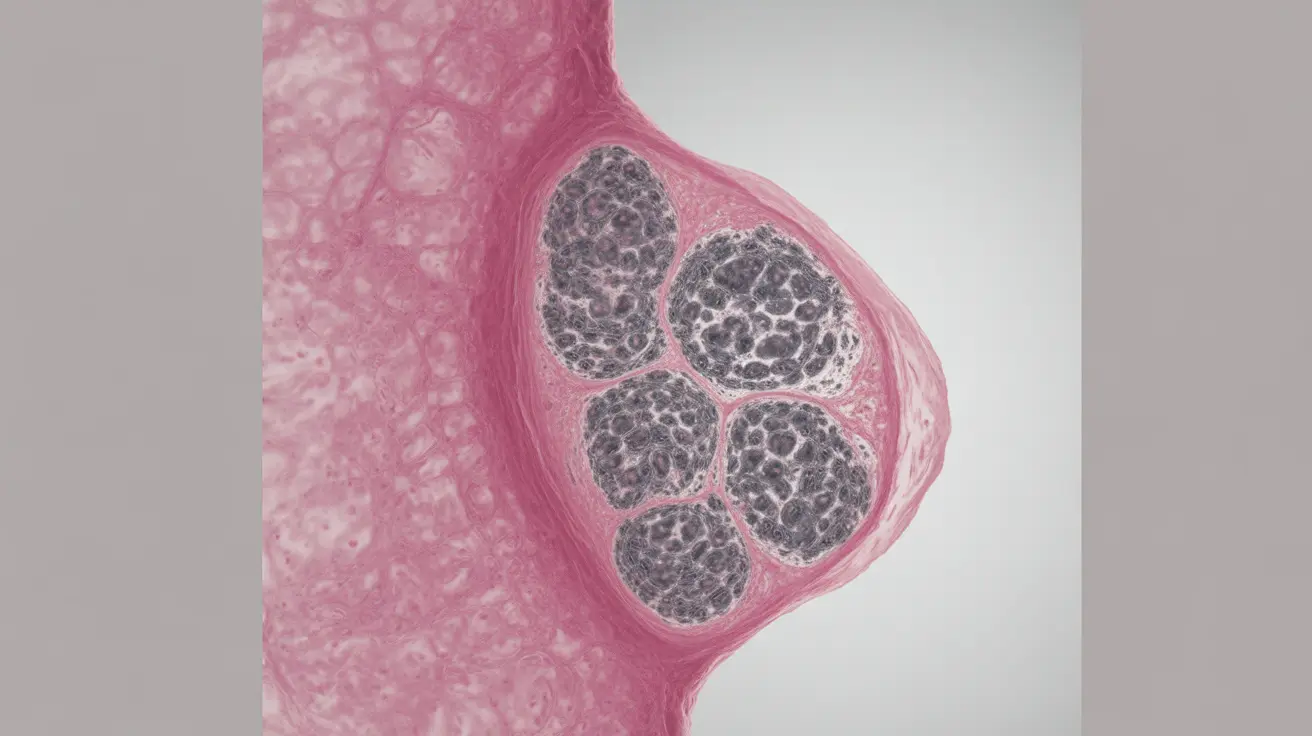When diagnosed with breast cancer, understanding the distinction between invasive and noninvasive forms is crucial for both treatment planning and prognosis. These two types of breast cancer behave differently in the body and require different approaches to treatment. This comprehensive guide will help you understand the key differences, symptoms, and treatment options for both forms.
What Defines Invasive and Noninvasive Breast Cancer?
Invasive breast cancer occurs when cancer cells break through the walls of the milk ducts or lobules and spread into surrounding breast tissue. In contrast, noninvasive breast cancer, also known as carcinoma in situ, remains confined within the ducts or lobules where it originally developed.
Characteristics of Noninvasive Breast Cancer
Noninvasive breast cancer, particularly ductal carcinoma in situ (DCIS), is often considered a precancer or Stage 0 breast cancer. It's characterized by abnormal cells that remain contained within their original location, posing no immediate threat to surrounding tissues. Early detection and treatment of DCIS can prevent its progression to invasive cancer.
Understanding Invasive Breast Cancer
Invasive breast cancer comes in several forms, with invasive ductal carcinoma (IDC) being the most common type. These cancers have the ability to spread beyond their original location and potentially reach other parts of the body through the bloodstream or lymphatic system.
Symptoms and Detection
While noninvasive breast cancer rarely presents physical symptoms and is typically discovered during routine mammograms, invasive breast cancer may cause various noticeable changes, including:
- A new lump or mass in the breast
- Changes in breast size or shape
- Skin changes or dimpling
- Nipple discharge or inversion
- Breast pain or tenderness
- Changes in the texture of breast skin
Treatment Approaches
Treatment for Noninvasive Breast Cancer
Treatment for DCIS typically involves:
- Lumpectomy or mastectomy
- Radiation therapy (often following lumpectomy)
- Possible hormonal therapy to prevent recurrence
Managing Invasive Breast Cancer
Treatment for invasive breast cancer is generally more comprehensive and may include:
- Surgery (lumpectomy or mastectomy)
- Chemotherapy
- Radiation therapy
- Targeted therapy
- Hormonal therapy
- Immunotherapy in certain cases
Prognosis and Outlook
The prognosis for breast cancer varies significantly between invasive and noninvasive types. DCIS has an excellent prognosis when treated appropriately, with a nearly 100% survival rate. Invasive breast cancer prognosis depends on various factors, including stage at diagnosis, tumor characteristics, and response to treatment.
Frequently Asked Questions
What are the main differences between invasive and noninvasive breast cancer?
The primary difference lies in their behavior: noninvasive breast cancer remains contained within its original location (ducts or lobules), while invasive breast cancer breaks through these boundaries and can spread to surrounding tissues and potentially other parts of the body.
How is ductal carcinoma in situ (DCIS) treated, and what are its chances of becoming invasive?
DCIS is typically treated with surgery (lumpectomy or mastectomy) and often radiation therapy. When properly treated, the risk of DCIS becoming invasive is relatively low, around 20-30% if left untreated. Appropriate treatment significantly reduces this risk.
What are the typical symptoms of invasive breast cancer that a person should be aware of?
Key symptoms include breast lumps, changes in breast size or shape, skin changes, nipple discharge or inversion, breast pain, and changes in breast skin texture. However, some cases may not show obvious symptoms, making regular screenings crucial.
Can invasive breast cancer always be cured, or what are the treatment options for managing it?
While many cases of invasive breast cancer can be successfully treated, especially when caught early, cure rates vary depending on multiple factors. Treatment options include surgery, chemotherapy, radiation, targeted therapies, and hormonal treatments, often used in combination.
How does the aggressiveness of invasive ductal carcinoma compare to other types of breast cancer?
Invasive ductal carcinoma's aggressiveness varies significantly based on factors like tumor grade, hormone receptor status, and HER2 status. Some forms can be more aggressive than others, but individual cases must be evaluated based on their specific characteristics.




